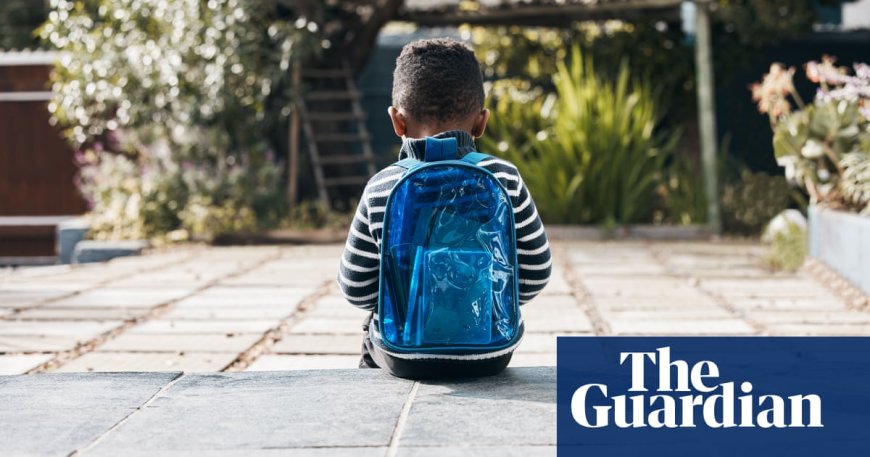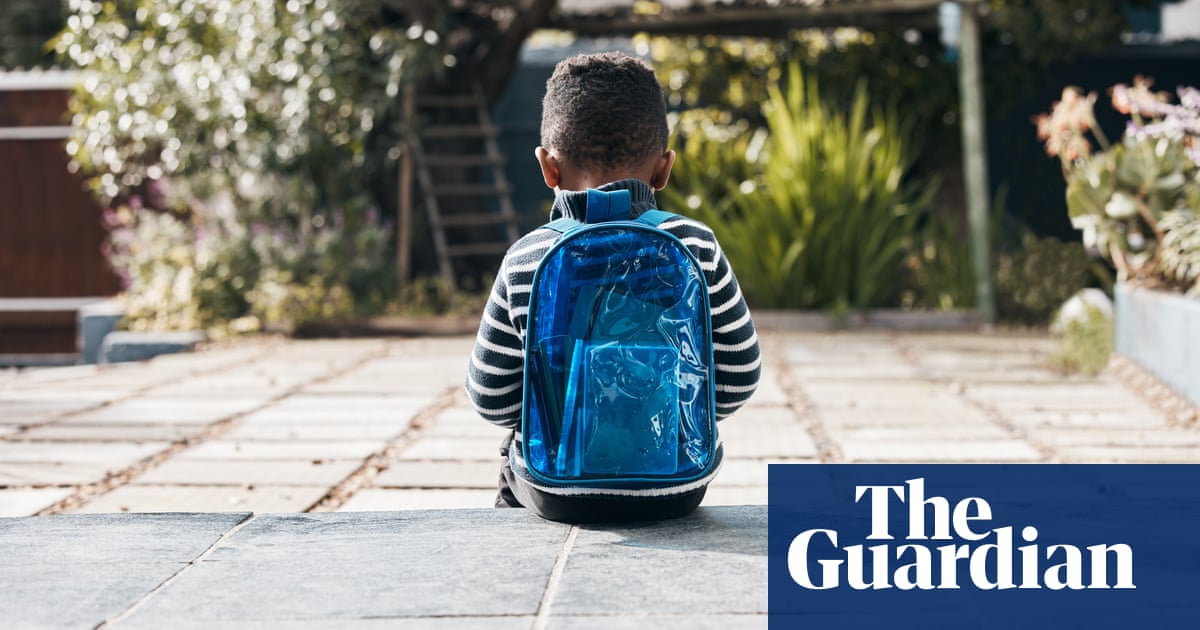Shouting at children can be as damaging as physical or sexual abuse, study says
Shouting at children can be as damaging as physical or sexual abuse, study says The Guardian


Parents’ Verbal Abuse Linked to Negative Outcomes for Children, Study Shows
A new study suggests that parents who shout at their children or use derogatory language are putting their children at a higher risk of self-harm, drug use, and criminal behavior. The research argues that harshly speaking to children should be recognized as a form of abuse due to the significant damage it causes.
The study, published in the journal Child Abuse & Neglect, defines adult-to-child verbal abuse as shouting, yelling, denigrating the child, and making verbal threats. The authors argue that these actions can be as detrimental to a child’s development as physical and sexual abuse.
Prevalence and Impact of Childhood Verbal Abuse
Childhood verbal abuse is reported to be more common than physical or sexual abuse, affecting approximately 40% of children. Prof Shanta R Dube, a co-author of the study, emphasizes that adults often underestimate the negative impact of their critical and derogatory words on children, especially if they themselves were parented in a similar manner.
The study reviewed existing evidence on the consequences of childhood verbal abuse. A UK study led by Prof Mark Bellis found that individuals who had experienced verbal abuse were almost twice as likely to use cannabis and had a higher risk of ending up in jail compared to those who had not been verbally abused.
Another survey conducted in the UK revealed that 41% of 11- to 17-year-olds reported frequent use of hurtful and upsetting words by adults, including parents, carers, teachers, and friends’ parents. The most commonly cited hurtful words were “you’re useless” and “you’re stupid.”
The Importance of Positive Language
Experts in children’s development and mental health have expressed concern about the extent of verbal abuse by adults. In response, a new charity called Words Matter has been established to raise awareness and combat this issue. The charity is supported by organizations such as the NSPCC, Save The Children, Place2Be, and the Anna Freud Centre.
Prof Peter Fonagy, a co-author of the study and the CEO of the Anna Freud Centre, highlights that children trust and take adults’ words seriously. When adults misuse language to abuse rather than teach, it can lead to feelings of shame, isolation, and exclusion. Verbal abuse has been linked to various psychological and physical disorders, as well as an increased risk of recreating abusive situations in their own lives.
Addressing the Issue
The study emphasizes the need to detect and prevent childhood verbal abuse, which is often overlooked. Parents, in particular, should be made aware of the long-lasting impact of their words and encouraged to communicate with their children in a more positive manner.
SDGs, Targets, and Indicators
| SDGs | Targets | Indicators |
|---|---|---|
| SDG 3: Good Health and Well-being | Target 3.4: By 2030, reduce by one-third premature mortality from non-communicable diseases through prevention and treatment and promote mental health and well-being | Indicator: Number of children experiencing childhood verbal abuse |
| SDG 4: Quality Education | Target 4.7: By 2030, ensure that all learners acquire the knowledge and skills needed to promote sustainable development, including through education for sustainable development and sustainable lifestyles, human rights, gender equality, promotion of a culture of peace and non-violence, global citizenship and appreciation of cultural diversity and of culture’s contribution to sustainable development | Indicator: Percentage of children who have experienced verbal abuse and engage in self-harm or drug use |
| SDG 5: Gender Equality | Target 5.2: Eliminate all forms of violence against all women and girls in the public and private spheres, including trafficking and sexual and other types of exploitation | Indicator: Percentage of children who have experienced verbal abuse by gender |
| SDG 10: Reduced Inequalities | Target 10.2: By 2030, empower and promote the social, economic and political inclusion of all, irrespective of age, sex, disability, race, ethnicity, origin, religion or economic or other status | Indicator: Percentage of children who have experienced verbal abuse by socioeconomic status |
| SDG 16: Peace, Justice and Strong Institutions | Target 16.2: End abuse, exploitation, trafficking and all forms of violence against and torture of children | Indicator: Percentage of children who have experienced verbal abuse and end up in jail |
1. Which SDGs are addressed or connected to the issues highlighted in the article?
SDG 3: Good Health and Well-being
The article discusses the negative impact of childhood verbal abuse on children’s development, mental health, and well-being. This aligns with the goal of promoting good health and well-being for all individuals.
SDG 4: Quality Education
The article emphasizes the importance of positive communication and the harmful effects of verbal abuse on children’s learning and development. It highlights the need for education that promotes sustainable development, non-violence, and positive communication.
SDG 5: Gender Equality
The article mentions that children of all genders can be victims of verbal abuse. Addressing this issue is crucial for achieving gender equality and eliminating violence against women and girls.
SDG 10: Reduced Inequalities
The article highlights that children from different socioeconomic backgrounds can experience verbal abuse. Addressing this issue is essential for reducing inequalities and promoting social inclusion.
SDG 16: Peace, Justice and Strong Institutions
The article discusses the negative impact of verbal abuse on children’s behavior and the increased risk of ending up in jail. Ending abuse and violence against children is a key component of promoting peace, justice, and strong institutions.
2. What specific targets under those SDGs can be identified based on the article’s content?
– Target 3.4: By 2030, reduce by one-third premature mortality from non-communicable diseases through prevention and treatment and promote mental health and well-being.
– Target 4.7: By 2030, ensure that all learners acquire the knowledge and skills needed to promote sustainable development, including through education for sustainable development and sustainable lifestyles, human rights, gender equality, promotion of a culture of peace and non-violence, global citizenship and appreciation of cultural diversity and of culture’s contribution to sustainable development.
– Target 5.2: Eliminate all forms of violence against all women and girls in the public and private spheres, including trafficking and sexual and other types of exploitation.
– Target 10.2: By 2030, empower and promote the social, economic and political inclusion of all, irrespective of age, sex, disability, race, ethnicity, origin, religion or economic or other status.
– Target 16.2: End abuse, exploitation, trafficking and all forms of violence against and torture of children.
3. Are there any indicators mentioned or implied in the article that can be used to measure progress towards the identified targets?
The article mentions indicators that can be used to measure progress towards the identified targets:
– Number of children experiencing childhood verbal abuse (Indicator for SDG 3)
– Percentage of children who have experienced verbal abuse and engage in self-harm or drug use (Indicator for SDG 4)
– Percentage of children who have experienced verbal abuse by gender (Indicator for SDG 5)
– Percentage of children who have experienced verbal abuse by socioeconomic status (Indicator for SDG 10)
– Percentage of children who have experienced verbal abuse and end up in jail (Indicator for SDG 16)
These indicators can be used to track the prevalence of childhood verbal abuse, its impact on children’s well-being and behavior, and the effectiveness of interventions and policies aimed at addressing this issue.
4. SDGs, Targets, and Indicators
| SDGs | Targets | Indicators |
|---|---|---|
| SDG 3: Good Health and Well-being | Target 3.4: By 2030, reduce by one-third premature mortality from non-communicable diseases through prevention and treatment and promote mental health and well-being | Indicator: Number of children experiencing childhood verbal abuse |
| SDG 4: Quality Education | Target 4.7: By 2030, ensure that all learners acquire the knowledge and skills needed to promote sustainable development, including through education for sustainable development and sustainable lifestyles, human rights, gender equality, promotion of a culture of peace and non-violence, global citizenship and appreciation of cultural diversity and of culture’s contribution to sustainable development | Indicator: Percentage of children who have experienced verbal abuse and engage in self-harm or drug use |
| SDG 5: Gender Equality |
Behold! This splendid article springs forth from the wellspring of knowledge, shaped by a wondrous proprietary AI technology that delved into a vast ocean of data, illuminating the path towards the Sustainable Development Goals. Remember that all rights are reserved by SDG Investors LLC, empowering us to champion progress together. Source: theguardian.com
Join us, as fellow seekers of change, on a transformative journey at https://sdgtalks.ai/welcome, where you can become a member and actively contribute to shaping a brighter future.
|








